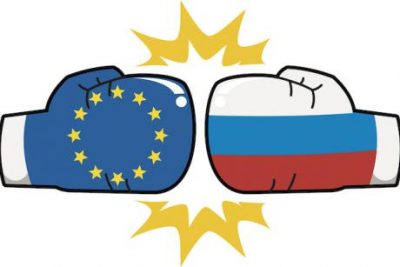EU Freezes Russian Assets Worth €13.8 Billion, but Struggles to Move Towards Seizure

All Global Research articles can be read in 51 languages by activating the “Translate Website” drop down menu on the top banner of our home page (Desktop version).
To receive Global Research’s Daily Newsletter (selected articles), click here.
Follow us on Instagram and Twitter and subscribe to our Telegram Channel. Feel free to repost and share widely Global Research articles.
***
The EU has frozen Russian assets worth €13.8 billion since Russia invaded Ukraine on 24 February, but this large sum remains largely untouched across the bloc, a high-ranking European Commission official said on Tuesday (12 July).
“For the moment, we have frozen – coming from oligarchs and other entities – €13.8 billion, so it’s quite huge,” European Justice Commissioner Didier Reynders told reporters in Prague.
“But I must say that a very large part of it, more than €12 billion (…), is coming from five member states,” he said, refusing to name the five countries, adding that he expected other member states to step up their efforts soon.
German Finance Minister Christian Lindner put the value of assets frozen by the country alone at €4.48 billion in mid-June.
At the end of June, an international sanctions task force said its members, including several EU countries, had blocked $30 billion in assets belonging to Russian oligarchs and officials.
The Russian Elites, Proxies, and Oligarchs Task Force (REPO) said its members, who also include the US, Canada, Britain, Japan and other allies, had immobilised $300 billion owned by the Russian central bank.
The EU has so far adopted six sanction packages against Russia, including a ban on most Russian oil imports approved in early June.
A total of 98 companies and 1,158 individuals, including Russian President Vladimir Putin and Foreign Minister Sergei Lavrov, have seen their property frozen and been banned from entering the EU.
Exploring to seize
However, as the financial reconstruction of Ukraine will require huge sums to rebuild the country after the war, the EU and member states are increasingly looking for ways how to potentially use frozen assets for this purpose.
Ukraine’s Justice Minister Denys Maliuska in Prague on Tuesday repeated calls for seized assets to be used to cover compensation for war damages.
“Currently they are protected by sovereign immunity, but our understanding is that assets of a state (that) started a war, committed aggression, shall not be protected by sovereign immunity,” he said.
“We are suffering from economic losses, and it does not make sense to cover all those losses with Ukrainian or European taxpayers’ money,” Maliuska added.
Many member states, for various reasons, are struggling to freeze assets of people sanctioned by the EU for their ties to the Kremlin. Furthermore, they lack legal powers to confiscate frozen assets.
In May, the Commission unveiled plans to make it easier to confiscate frozen assets linked to serious illegal activities and suspected criminals, including those evading EU sanctions against Russia.
Under the proposal, which still has to be approved by EU leaders, the violation of EU restrictive measures would be added to the list of crimes, which would create a legal basis for criminal offences and penalties across the EU.
Such common EU rules, in theory, would make it easier to investigate, prosecute and punish violations and, in the next step, seize assets with the help of the new ‘Freeze and Seize’ Task Force, set up by the Commission in March.
Although EU leaders initially were meant to green-light the European Commission proposal in June, Reynders said on Tuesday he expected a final political agreement after the summer with the policy possibly taking effect in the autumn.
To determine the feasibility of seizures, the European Commission earlier this month gave its approval to a pilot project to explore aspects such as sanction adoption, asset freezes, asset confiscation, and reintroduction of the confiscated assets into the national economy for social use, as well as into the EU budget for public spending in Ukraine.
*
Note to readers: Please click the share buttons above or below. Follow us on Instagram and Twitter and subscribe to our Telegram Channel. Feel free to repost and share widely Global Research articles.

